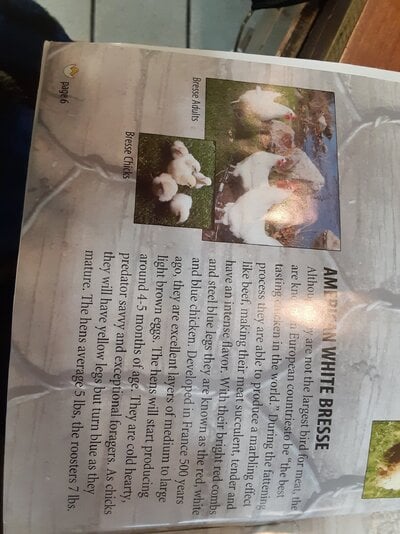Hi, I'm wanting to get into breeding chickens, but I've never tried anything outside of casually letting by broodies hatch whatever eggs they found. I can order some American white Bresse chicks, but kind of want to try crossing them with something that grows bigger.
I'm looking to keep the meat flavoring but get a larger and potentially faster growing bird. Cold hardy is necessary as I live in Northern Utah. I would also love to try to have some good foragers that lay decently well.
Should I use Bresse hens or a bresse rooster? I'm only planning on one breeding pen for now. I really am just looking for experience here but I may be able to increase the project if it takes off.
I'm looking to keep the meat flavoring but get a larger and potentially faster growing bird. Cold hardy is necessary as I live in Northern Utah. I would also love to try to have some good foragers that lay decently well.
Should I use Bresse hens or a bresse rooster? I'm only planning on one breeding pen for now. I really am just looking for experience here but I may be able to increase the project if it takes off.




